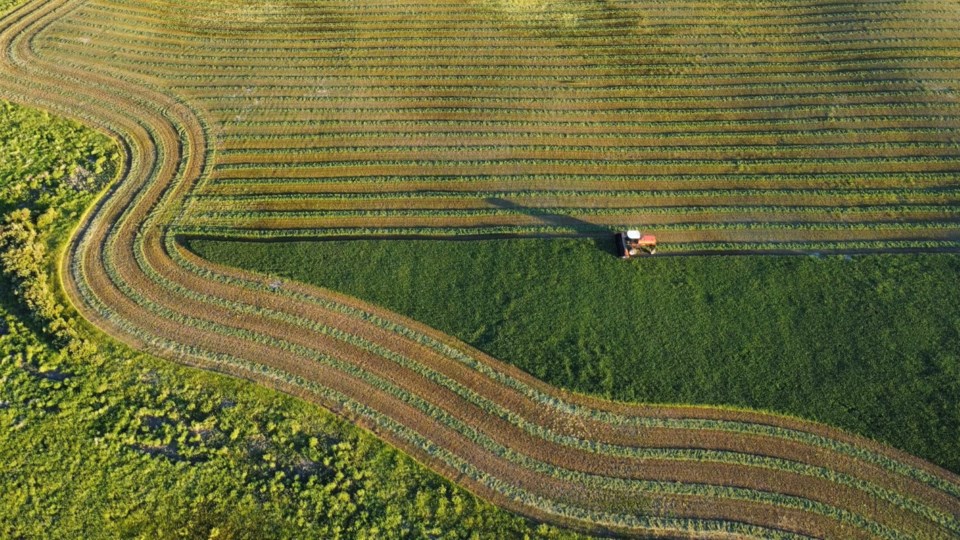REGINA — A week of warmer weather and reduced rainfall has accelerated crop advancement and enabled haying operations to progress throughout the province.
With the forecasted heat over the next week many regions are hoping for moisture to help support crop development, reduce crop stress and sustain topsoil moisture conditions.
Many areas across the province received reduced to trace amounts of moisture, but a few isolated storms did move through the province and brought hail, wind and heavy rainfall. The highest rain recorded over the past week was in the Macklin area at 48 mm. This was followed by the Arborfield area at 40 mm. The Duck Lake and Choiceland areas received 33 mm.
Reduced precipitation and increased temperatures continue to reduce topsoil moisture throughout the province. Currently, cropland topsoil moisture is rated as four per cent surplus, 77 per cent adequate, 17 per cent short and two per cent very short. Hayland topsoil moisture is reported at three per cent surplus, 76 per cent adequate, 18 per cent short and three per cent very short. Pasture topsoil moisture is three per cent surplus, 71 per cent adequate, 22 per cent short and four per cent very short.
Recent warmer weather has allowed for quicker crop development with more crops moving closer to their normal stages of development as compared to previous weeks. Ninety per cent of fall cereals are at normal stages of development for this time of year. Sixty-eight per cent of spring cereals are at normal stages of development, while 27 per cent are falling behind the normal stages of development. Sixty-six per cent of oilseeds are at normal stages of development, while 30 per cent are falling behind the normal stages of development. Seventy-eight per cent of pulse crops are at normal stages of development, while 18 per cent are falling behind the normal stages of development. Seventy-seven per cent of perennial forages and 76 per cent of annual forages are at the normal stages of development for this time of year.
Currently, 26 per cent of the province's first cut of hay has been baled or silaged with 32 per cent of hay cut and waiting to cure and 42 per cent still standing. Initial reports are estimating provincial hay yields at 1.73 tons/acre. This is above the five-year average of 1.01 tons/ac and the 10-year average of 1.13 tons/acre. Producers are estimating silage yield at 4.98 tons/acre. Overall hay quality is rated at 28 per cent excellent, 65 per cent good and seven per cent fair. Producers in some regions are not anticipating a second cut of hay this year unless rain is received.
Producers in the southwest portion of the province, along with a few areas in the southeast, are reporting minor to moderate crop damage in relation to lack of moisture occurring within these regions. The increased heat that is forecasted will cause further crop deterioration if moisture is not received. Additional crop damage this past week is mainly due to gophers, grasshoppers, hail, heat and wind. Overall, pest pressure is remaining lower throughout many regions, but producers are continuing to monitor their fields for any changes. Fungicides are continuing to be applied to either suppress disease that has already developed or proactively to reduce disease development.
Over the upcoming weeks, producers will be busy finishing fungicide spraying, haying operations and getting equipment ready for harvest. Producers are reminded to keep safety top of mind while working. For any crop or livestock questions, producers are encouraged to call the Agriculture Knowledge Centre, Toll Free: 1-866-457-2377.
A complete, printable version of the Crop Report is available online - Download Crop Report.
Follow the 2024 Crop Report on Twitter at @SKAgriculture




